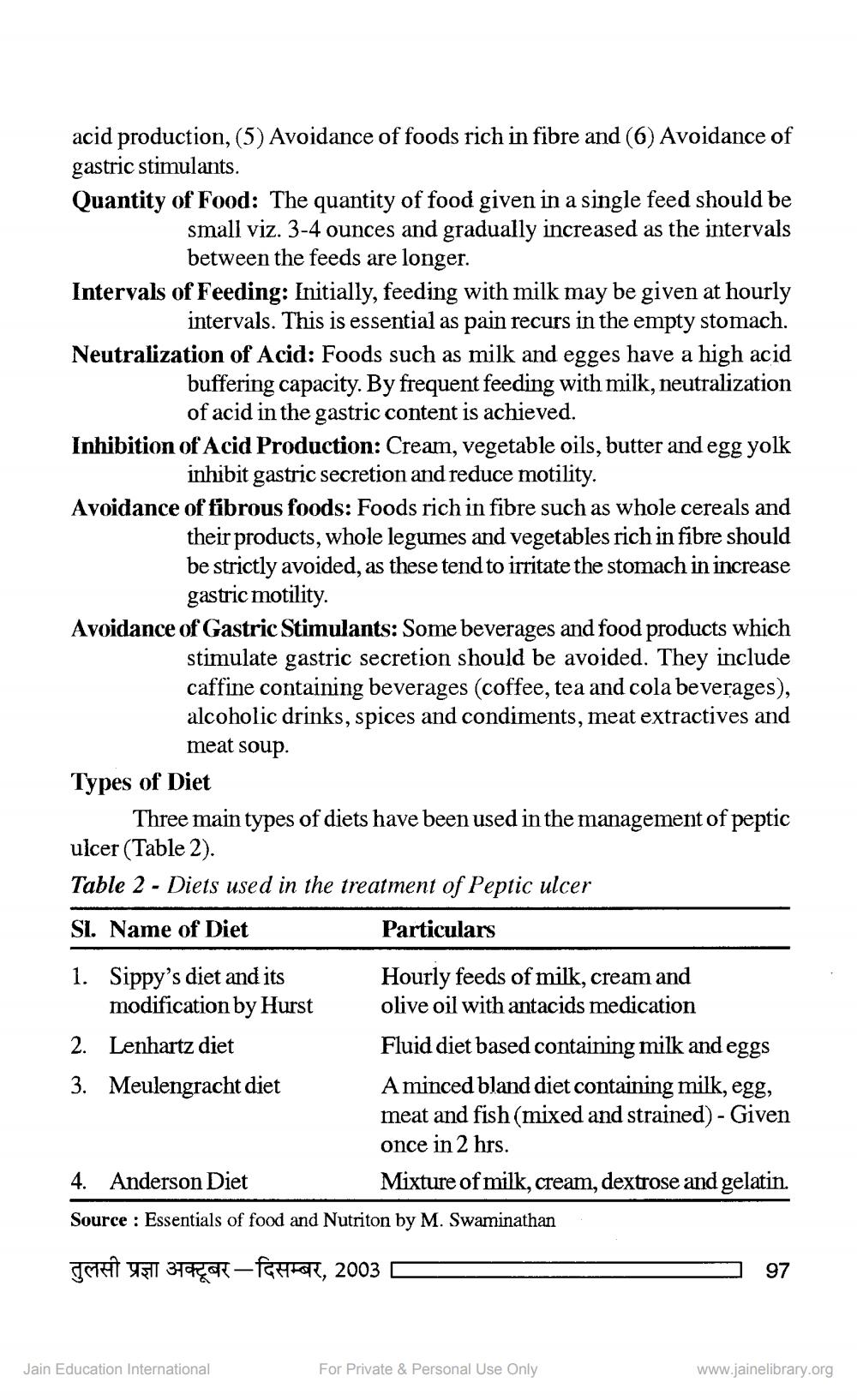________________
acid production, (5) Avoidance of foods rich in fibre and (6) Avoidance of gastric stimulants. Quantity of Food: The quantity of food given in a single feed should be
small viz. 3-4 ounces and gradually increased as the intervals
between the feeds are longer. Intervals of Feeding: Initially, feeding with milk may be given at hourly
intervals. This is essential as pain recurs in the empty stomach. Neutralization of Acid: Foods such as milk and egges have a high acid
buffering capacity. By frequent feeding with milk, neutralization
of acid in the gastric content is achieved. Inhibition of Acid Production: Cream, vegetable oils, butter and egg yolk
inhibit gastric secretion and reduce motility. Avoidance of fibrous foods: Foods rich in fibre such as whole cereals and
their products, whole legumes and vegetables rich in fibre should be strictly avoided, as these tend to irritate the stomach in increase
gastric motility. Avoidance of Gastric Stimulants: Some beverages and food products which
stimulate gastric secretion should be avoided. They include caffine containing beverages (coffee, tea and cola beverages), alcoholic drinks, spices and condiments, meat extractives and
meat soup. Types of Diet
Three main types of diets have been used in the management of peptic ulcer (Table 2). Table 2 - Diets used in the treatment of Peptic ulcer SI. Name of Diet
Particulars
1. Sippy's diet and its Hourly feeds of milk, cream and
modification by Hurst olive oil with antacids medication 2. Lenhartz diet
Fluid diet based containing milk and eggs 3. Meulengracht diet A minced bland diet containing milk, egg,
meat and fish(mixed and strained) - Given
once in 2 hrs. 4. Anderson Diet
Mixture of milk, cream, dextrose and gelatin. Source : Essentials of food and Nutriton by M. Swaminathan
geeft yFil 377€ ck - FGH1R, 2003
-
97
Jain Education International
For Private & Personal Use Only
www.jainelibrary.org




